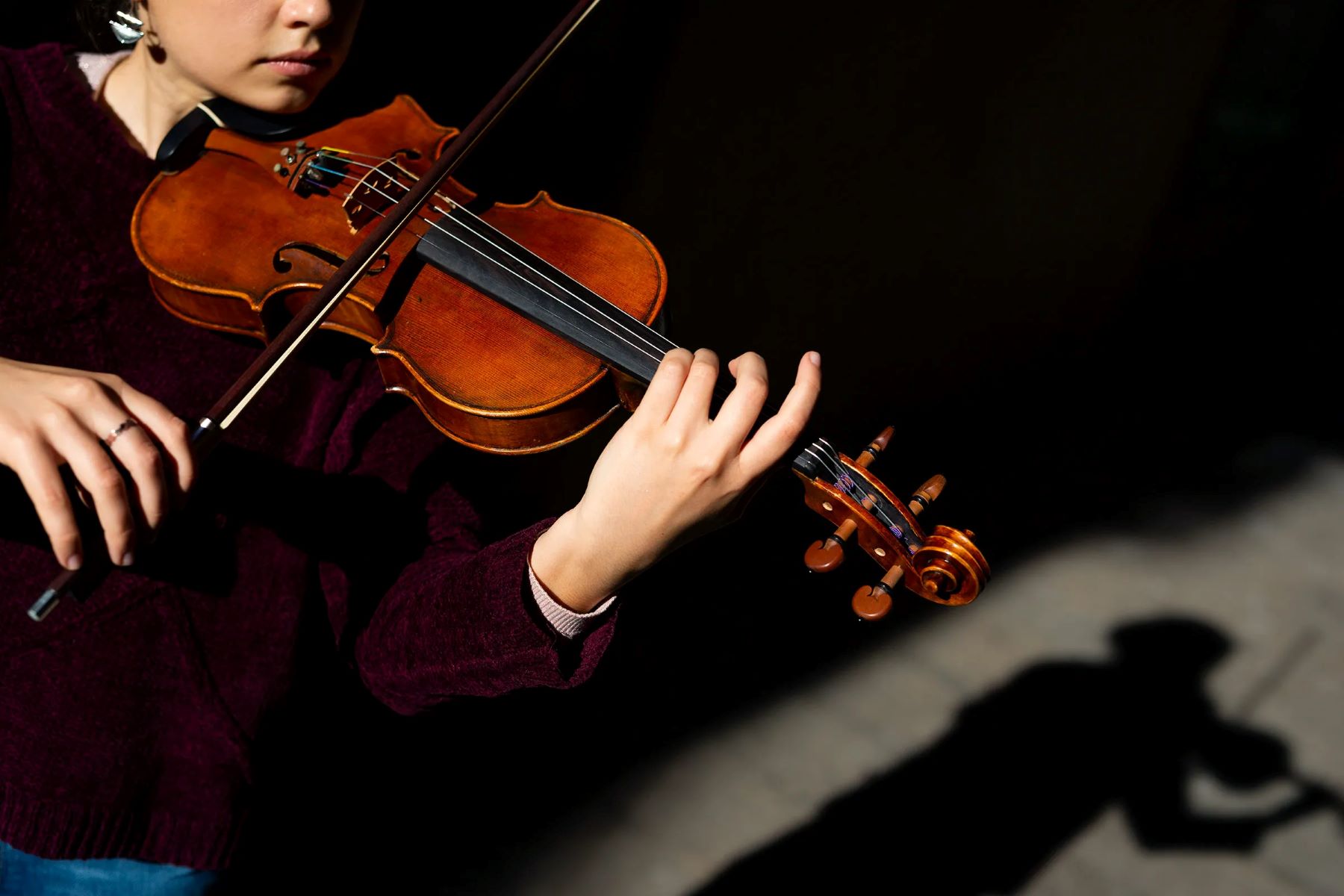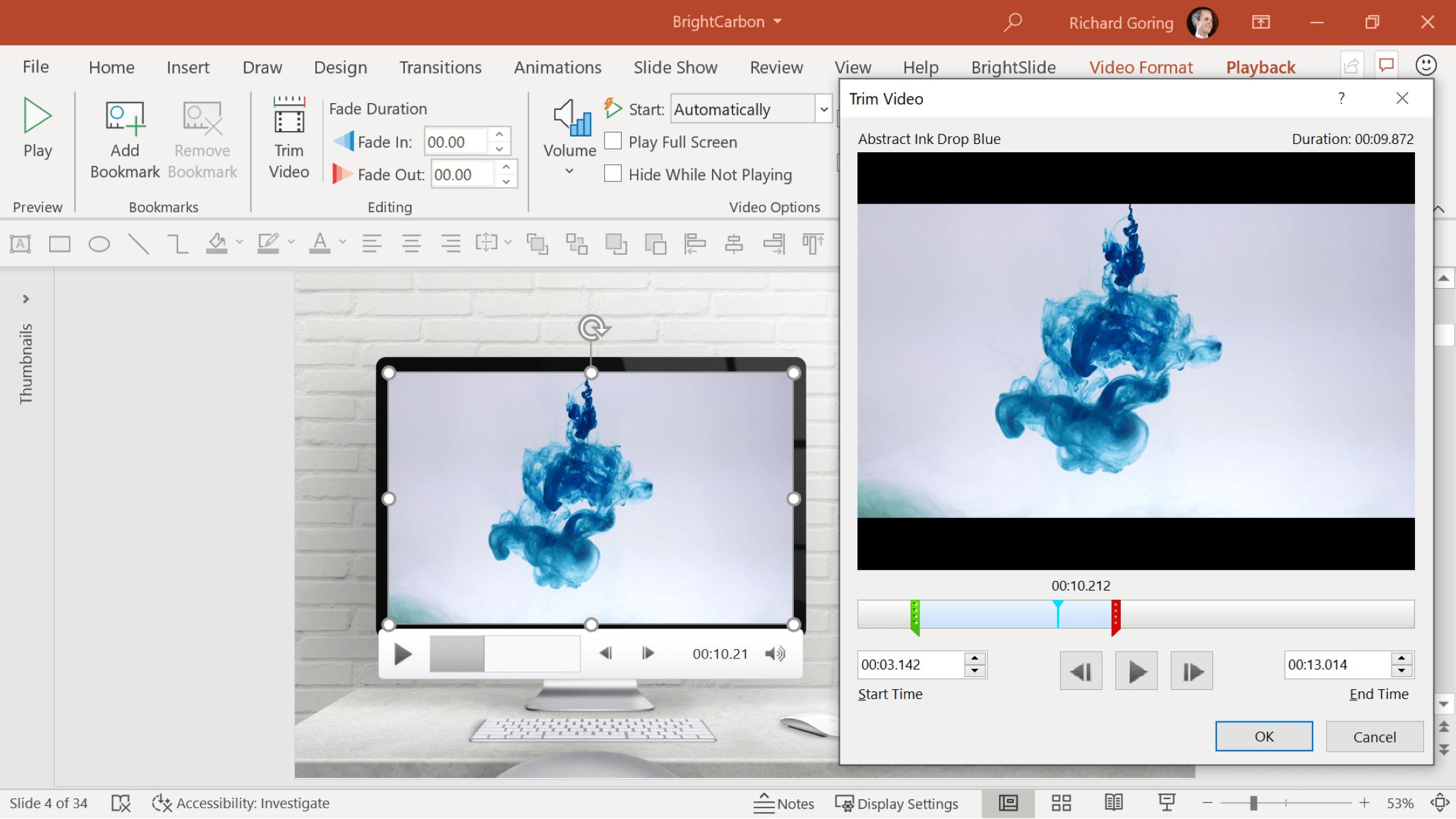Home>Production & Technology>Background Music>How To Play Background Music With Electric Violin


Background Music
How To Play Background Music With Electric Violin
Modified: January 22, 2024
Learn how to play background music with an electric violin and add a unique touch to your performances. Explore techniques and tips for creating captivating melodies.
(Many of the links in this article redirect to a specific reviewed product. Your purchase of these products through affiliate links helps to generate commission for AudioLover.com, at no extra cost. Learn more)
Table of Contents
Introduction
Background music adds depth and ambiance to any setting, whether it’s a live performance, a social event, or even just a relaxing evening at home. When combined with the melodic and versatile sounds of an electric violin, it can create a captivating atmosphere that enhances the overall experience. Whether you are a violin enthusiast wanting to explore new horizons or a professional musician looking to expand your repertoire, playing background music with an electric violin can open up a world of possibilities.
In this article, we will guide you through the process of playing background music with an electric violin. We will explore the different elements involved, from selecting the right electric violin to choosing the appropriate background music genres. We will also cover setting up the instrument, connecting it to an amplifier, adjusting volume and tone, and practicing techniques specific to background music.
Playing background music with an electric violin offers unique advantages compared to its acoustic counterpart. The ability to amplify the sound allows for a greater presence and versatility in various settings. Additionally, electric violins often come with built-in effects and connections that enable musicians to experiment with different sounds and styles.
Whether you are a classical violinist aiming to add modern elements to your repertoire or an improvisational performer seeking to explore new genres, the electric violin provides you with the tools to do so. So, let’s dive in and discover how to play background music with an electric violin, unlocking an enchanting world of musical possibilities.
Selecting the Right Electric Violin
When it comes to playing background music with an electric violin, selecting the right instrument is essential. Electric violins come in a variety of styles, designs, and price ranges, so it’s important to consider your specific needs and preferences.
First and foremost, consider the sound quality. Look for an electric violin that produces a rich and resonant tone, as this will greatly impact the overall impact of your background music. Consider the materials used in the construction of the instrument, such as the body, strings, and pickups. High-quality materials will contribute to a better sound quality.
Next, think about your playing style and comfort. Electric violins come in various shapes and sizes, so find one that feels comfortable in your hands. Consider the weight and balance of the instrument, as well as the shape of the neck and fingerboard. These factors will affect your ease of playing and overall playing experience.
Another important aspect to consider is the appearance of the electric violin. Think about the aesthetics and how the instrument fits your personal style. While the sound is the most crucial factor, feeling confident and inspired by the instrument’s appearance can greatly enhance your performance.
Budget is also a significant consideration. Electric violins can vastly range in price, from affordable entry-level options to high-end professional instruments. Set a budget that works for you and explore the available options within that range. Remember that while a higher price tag often corresponds to better quality, you can still find excellent electric violins at more affordable price points.
Lastly, consider any additional features or accessories that may come with the electric violin. Some models offer built-in effects and controls, allowing you to adjust and personalize your sound. Others may come with a case, bow, or even a shoulder rest. Assess your individual needs and determine if any of these features are important to you.
Overall, selecting the right electric violin for playing background music requires a careful balance of sound quality, comfort, aesthetics, and budget considerations. Take your time to research and test out different options, and choose an instrument that not only meets your technical requirements but also resonates with your artistic vision.
Choosing the Right Background Music
Choosing the right background music is crucial to creating the desired atmosphere and setting the tone for your performance with the electric violin. Consider the following factors when selecting the perfect background music:
Genre and Style: Determine the genre or style of music that best suits the occasion or theme. Are you performing at a classy cocktail party where jazz or classical music would be appropriate? Or are you playing at a modern event where contemporary pop or electronic music would fit better? Consider the mood you want to create and select the genre accordingly.
Tempo and Energy: Consider the tempo and energy level of the background music. If you’re playing in a relaxed ambiance, choosing slower and more mellow tunes can enhance the atmosphere. On the other hand, if you’re playing at a lively event, selecting upbeat and energetic tracks can liven up the crowd.
Instrumentation: Determine whether you want the background music to feature primarily instrumental tracks or include vocals. Instrumental music can be an excellent choice as it allows the electric violin to shine and take center stage. However, vocal tracks can also add depth and variety to the performance.
Dynamic Range: Pay attention to the dynamic range of the background music. Look for tracks that have a good balance between softer and more intense sections. This will allow you to showcase the range of expression on the electric violin and create dynamic contrasts within your performance.
Personal Preference: Consider your own taste and musical preferences. Choose background music that you not only enjoy but also feel confident playing along with. When you connect with the music on a personal level, it will translate into a more captivating and authentic performance.
Furthermore, it’s important to note that you can adapt and customize the background music to suit your style and artistic vision. Experiment with different arrangements and interpretations of popular songs or create your own improvised melodies on top of existing tracks. The goal is to find a balance where the background music complements and enhances your electric violin performance.
Ultimately, choosing the right background music for your electric violin performance requires a careful consideration of genre, tempo, energy, instrumentation, dynamic range, and personal taste. Take the time to research and curate a playlist that fits the occasion and resonates with both you and your audience.
Setting Up the Electric Violin
Before you start playing background music with an electric violin, it’s important to properly set up the instrument for optimal performance. Here are the steps to follow for setting up your electric violin:
1. Check the Instrument: Inspect your electric violin for any damages or loose parts. Ensure that the body, neck, and strings are in good condition. If you notice any issues, address them before proceeding.
2. Tune the Strings: Electric violins need to be tuned just like acoustic violins. Use a tuner to ensure that each string is in the correct pitch. This will ensure that your instrument produces the desired sound.
3. Adjust the Bridge: Check the placement and alignment of the bridge. The bridge should be centered and standing upright between the strings. Make any necessary adjustments to ensure the bridge is in the correct position.
4. Check the Bow: Examine the condition of your bow. Make sure the bow hair is clean, straight, and properly tightened. If necessary, rosinate the bow hair to enhance the grip and sound production.
5. Set Up Your Playing Area: Find a comfortable and well-lit space where you can practice or perform with your electric violin. Make sure you have enough room to move freely and that there are no obstacles that could interfere with your playing.
6. Prepare Your Accessories: Gather any additional accessories you may need, such as a shoulder rest or music stand. These accessories can improve your playing comfort and support your performance.
7. Warm Up: Before diving into playing background music, take a few moments to warm up. Perform some scales or simple exercises to get your fingers and muscles ready for playing.
By following these steps, you will ensure that your electric violin is in optimal condition and ready for playing background music. Taking the time to set up your instrument properly will not only enhance your performance but also prolong the lifespan of your electric violin. Now that your instrument is ready, it’s time to connect it to an amplifier and bring your background music to life.
Connecting the Electric Violin to an Amplifier
One of the advantages of playing background music with an electric violin is the ability to amplify the sound, allowing you to be heard in larger venues or amongst other instruments. To connect your electric violin to an amplifier, follow these steps:
1. Prepare your amplifier: Ensure that your amplifier is in good working condition and appropriately set up. Check the power source, volume levels, and any other settings specific to your amplifier model.
2. Locate the output jack: Locate the output jack on your electric violin. This jack is usually located at the bottom or side of the instrument. It is typically a 1/4 inch (6.35mm) jack, similar to the ones used for electric guitars or other electric instruments.
3. Connect the cable: Insert one end of a high-quality instrument cable into the output jack of your electric violin. Make sure it is securely plugged in to avoid any sound interruptions.
4. Connect the other end of the cable: Connect the other end of the instrument cable to the input jack of your amplifier. This is usually labeled as “Instrument In” or “Input”. Again, ensure that the cable is properly plugged in.
5. Check the volume levels: Before playing, adjust the volume settings on both your electric violin and amplifier. Start with low volume levels to avoid sudden loud sounds and gradually increase it to your desired level. Take care to maintain a balance between your electric violin and any other instruments or backing tracks.
6. Test the connection: Once everything is connected, play a few notes or a short phrase on your electric violin to ensure that the sound is coming through the amplifier. Make any necessary adjustments to the volume or tone settings to achieve the desired sound quality.
Remember to use caution when plugging and unplugging cables to prevent any damage to your instrument or amplifier. It’s also a good idea to have spare cables on hand in case of any technical issues.
By connecting your electric violin to an amplifier, you can amplify the sound and customize it to suit the specific requirements of your background music. The amplifier provides greater control over your tone, allowing you to shape and enhance your performance to create the desired ambiance.
Adjusting the Volume and Tone
Once you have connected your electric violin to an amplifier and have achieved sound output, it’s important to understand how to adjust the volume and tone to enhance your background music performance. Here are the key considerations:
1. Volume Control: Most electric violins have a dedicated volume control knob or slider on the instrument itself. This allows you to adjust the output volume directly from the violin. Start with a moderate volume and gradually increase it until you achieve the desired level. Be mindful of the overall balance with other instruments or backing tracks if you have them.
2. Amplifier Controls: Your amplifier will also have volume controls. Adjusting the volume on the amplifier can have a significant impact on the overall sound output. Experiment with different settings and find the sweet spot that ensures your electric violin is audible but not overwhelming in relation to the other elements of your performance.
3. Tone Controls: Many electric violins and amplifiers have tone control options. These controls allow you to shape the tonal characteristics of your instrument. Common tone control options include bass, midrange, and treble adjustment knobs. Play around with these controls to find a tone that suits the genre and mood of your background music. Be careful not to overpower certain frequencies, as it can affect the clarity and balance of your sound.
4. Effects and EQ: Some electric violins come with built-in effects or EQ options. These features allow you to further customize your sound. Experiment with reverb, delay, chorus, or other effects to add dimension and depth to your background music. However, use these effects sparingly and purposefully, ensuring they enhance rather than distract from your performance.
5. Monitor the Sound: As you adjust the volume and tone, it’s important to constantly monitor the sound output. Pay attention to how it blends with other instruments or backing tracks if present. Make any necessary adjustments to ensure a well-balanced and cohesive sound.
Remember that the objective is to find a balance and tone that enhances your electric violin performance without overpowering the other elements. Take the time to experiment and fine-tune the settings to achieve the perfect blend for your background music.
By mastering the art of adjusting the volume and tone, you can achieve a professional and polished sound for your electric violin background music. It’s a skill that takes practice and experience, but with time, you’ll develop an instinct for finding the right balance and tone that brings your music to life.
Practicing Techniques for Background Music
Playing background music with an electric violin requires honing specific techniques to enhance the overall performance. Here are some practice techniques to help you master the art of playing background music:
1. Melody Fading: Background music is usually meant to create an atmosphere without overpowering the main focus. Practice fading your melody lines into the background, allowing them to become more subtle and supportive of the overall ambiance. This technique involves controlling dynamics and gradually reducing the volume and intensity of your playing while maintaining a smooth and seamless transition.
2. Chord Progression Arpeggios: Background music often relies on simple and repetitive chord progressions. Practice playing arpeggios over different chord progressions to develop a sense of chord voicing and harmonic progression. This will enable you to effortlessly accompany the music and create a captivating background texture with your electric violin.
3. Rhythmic Accompaniment: Background music often requires a steady and consistent rhythmic foundation. Practice playing various rhythmic patterns using the bow or pizzicato technique. Focus on maintaining a steady tempo and groove while blending harmoniously with the music. Experiment with syncopated rhythms or subtle variations to add depth and interest to your background playing.
4. Improvisation: While background music is typically more structured and repetitive, incorporating elements of improvisation can add a unique touch to your performance. Practice improvising melodies or embellishments over the chord progressions of the background music. This allows you to add personal expression and creativity while maintaining the overall ambiance and mood.
5. Listening and Reacting: Pay close attention to the other instruments or backing tracks in the background music. Practice actively listening and reacting to the nuances and dynamics of the music. Adjust the volume, tone, and intensity of your playing to complement and blend with the other musical elements, creating a cohesive and harmonious background atmosphere.
6. Timing and Syncing: Develop your sense of timing and synchronization by playing along with recordings of background music. Focus on maintaining a tight connection with the rhythm, making sure your playing seamlessly aligns with the beat. This skill is essential for creating a solid foundation and maintaining the desired ambiance in your background music performance.
Remember, consistency and subtlety are key when practicing techniques for background music. Refine your control over dynamics, rhythm, and tone to create a seamless and supportive backdrop for your audience. As you dedicate time to these practice techniques, you’ll find yourself becoming more adept at playing captivating background music with your electric violin.
Tips for Playing Background Music with Electric Violin
Playing background music with an electric violin requires a unique approach and offers exciting opportunities for expression. Here are some valuable tips to help you enhance your performance:
1. Choose the right sound: Experiment with different sound effects and settings on your electric violin to find the perfect tone for your background music. Use the EQ controls on your amplifier to shape the sound to fit the genre and ambiance you’re aiming for.
2. Practice dynamics: Mastering control over dynamics is crucial for playing background music. Practice playing softly and subtly, gradually increasing volume and intensity when needed. This skill allows you to adapt to the energy and atmosphere of the performance setting while maintaining a balanced and supportive role.
3. Focus on blend and balance: Pay attention to how your electric violin fits within the overall sound mix. Aim to blend with other instruments or backing tracks in a way that creates a harmonious and cohesive sound. Adjust your tone, volume, and articulation to ensure that your contribution enhances the musical experience.
4. Be responsive: Listen actively to the other musicians or backing tracks and adapt your playing accordingly. Respond to changes in dynamics, tempo, or musical cues to maintain a cohesive ensemble performance. This level of sensitivity and collaboration adds depth and richness to your background music.
5. Use varied techniques: Explore different playing techniques to add texture and dimension to your background music. Experiment with gentle bowing techniques, pizzicato, harmonics, or even percussive sounds to create unique and captivating sonic landscapes. These techniques can add interesting nuances and elevate your performance.
6. Find your musical space: Understand your role in the context of background music and find your musical space within the ensemble. Avoid overshadowing other instruments or vocalists, and instead aim to support and enhance their performances. This will create a cohesive and balanced musical experience.
7. Maintain a steady tempo: Background music often relies on a consistent and steady tempo. Develop your sense of timing and rhythm by practicing with a metronome and playing alongside recordings or backing tracks. This will help you establish a solid foundation and ensure that your playing synchronizes seamlessly within the musical setting.
8. Communicate with the audience: Engage with your audience while playing background music. Even though you may be in a supporting role, connect with your listeners through eye contact, subtle gestures, or gentle acknowledgments. This adds a personal touch and makes your performance more memorable.
9. Embrace and enjoy the ambiance: Embrace the unique nature of playing background music and enjoy the ambiance of the performance setting. Allow yourself to be in the moment, respond to the atmosphere, and let your electric violin become an integral part of creating a captivating musical environment.
10. Experiment and be creative: Don’t be afraid to experiment and add your own creative touches to the background music. Explore different genres, improvisation techniques, or even reinterpret familiar melodies to bring a fresh and unique perspective to the performance.
Remember, playing background music with an electric violin is a combination of technical skill, musical sensitivity, and creative expression. With these tips in mind, you can create mesmerizing background music that enhances any setting and captivates your audience.
Conclusion
Playing background music with an electric violin allows for a versatile and captivating musical experience. By selecting the right instrument, choosing appropriate background music genres, and setting up properly, you can create an enchanting atmosphere for any occasion.
Remember to connect your electric violin to an amplifier, adjusting the volume and tone to achieve the desired sound quality. Practice techniques specific to background music, such as melody fading, chord progression arpeggios, and rhythmic accompaniment, to enhance your performance. Take the time to listen and react to the other musical elements, maintaining a balanced and harmonious sound. Develop your sense of timing and synchronization to ensure a cohesive and captivating background music experience.
Throughout your journey of playing background music with an electric violin, always strive for blend and balance, adjusting your playing to fit seamlessly within the ensemble. Use varied techniques to add texture and dimension to your performance, and be responsive to the atmosphere and energy of the setting. Communicate with your audience through subtle gestures and engage them in the musical experience.
Lastly, embrace the unique ambiance of playing background music and allow your electric violin to become an integral part of creating a captivating musical environment. With creativity, practice, and a dedication to refining your skills, you can master the art of playing background music with an electric violin.
So, take the leap and explore the world of background music with your electric violin. Let your music create an enchanting atmosphere, captivate your audience, and bring joy to those around you!











